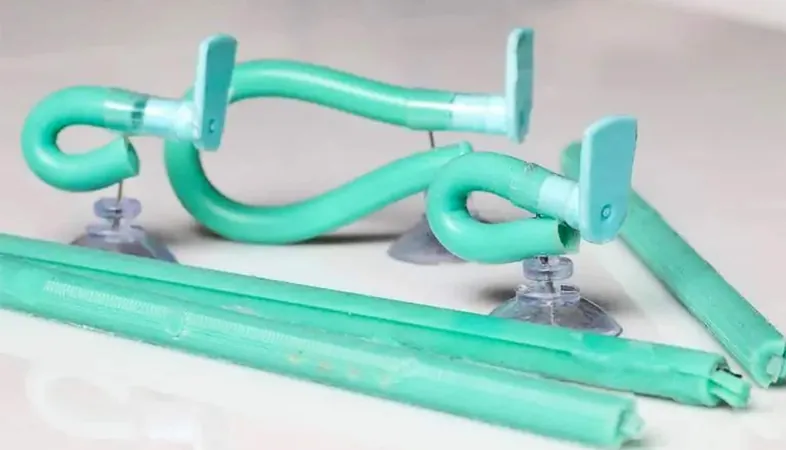
This Legless Robot Can Jump 10 Feet High—Inspired by Tiny Worms!
2025-05-15
Author: Arjun
Meet the Incredible Legless Jumper!
Engineers have crafted a groundbreaking 5-inch soft robot that defies expectations by jumping as high as a basketball hoop—despite lacking legs! Inspired by the remarkable jumping abilities of a tiny parasitic worm known as a nematode, this silicone robot features a resilient carbon-fiber spine.
How Do They Do It?
The research team, highlighted in *Science Robotics*, carefully observed high-speed videos of nematodes as they contort their bodies to propel themselves in bizarre yet effective ways. Lead coauthor Sunny Kumar from Georgia Tech marvels at the worm’s ability: 'They can leap up to 20 times their body length—imagine a human jumping onto a three-story building!'
Nematodes: The Tiny Yet Mighty Creatures
Nematodes, often referred to as round worms, are among the Earth's most abundant creatures. They thrive in various environments, including inside humans and plants, where they can sometimes cause illness, but also serve beneficial roles in agriculture by controlling pest populations.
Mastering the Art of Jumping
The team, led by Victor Ortega-Jimenez, a former Georgia Tech scientist now at UC Berkeley, spent over a year perfecting filming techniques to capture the dynamic jumps of these tiny worms. By bending their bodies into unique shapes, nematodes generate energy that allows for impressive leaps both forward and backward—mimicking a gymnast's precise backflip.
The Science Behind the Jumps
Kumar explains that by shifting their center of mass, nematodes can deftly control their jump trajectories. 'We haven't seen any other organism at this scale capable of such precise leaping in multiple directions. Their ability to generate a jump from a kink in their body is truly remarkable,' he adds.
Implications for Future Robotics
This remarkable study reveals that engineers could design simple elastic systems—crafted from materials like carbon fiber—that leverage similar kinking mechanics to jump across various terrains. Jumping robots, such as those intended for lunar exploration and search-and-rescue operations, could greatly benefit from these insights.
Continuing to Innovate
Kumar and his team are relentless in their quest to uncover the unique ways living creatures utilize their bodies, aiming to replicate these strategies in robotic designs. With potential applications ranging from space exploration to emergency assistance, the future is bright for jumping robots!
Funding and Acknowledgments
This fascinating research received support from the National Institutes of Health and the National Science Foundation. Their findings show the incredible potential of learning from nature to advance technology.


 Brasil (PT)
Brasil (PT)
 Canada (EN)
Canada (EN)
 Chile (ES)
Chile (ES)
 Česko (CS)
Česko (CS)
 대한민국 (KO)
대한민국 (KO)
 España (ES)
España (ES)
 France (FR)
France (FR)
 Hong Kong (EN)
Hong Kong (EN)
 Italia (IT)
Italia (IT)
 日本 (JA)
日本 (JA)
 Magyarország (HU)
Magyarország (HU)
 Norge (NO)
Norge (NO)
 Polska (PL)
Polska (PL)
 Schweiz (DE)
Schweiz (DE)
 Singapore (EN)
Singapore (EN)
 Sverige (SV)
Sverige (SV)
 Suomi (FI)
Suomi (FI)
 Türkiye (TR)
Türkiye (TR)
 الإمارات العربية المتحدة (AR)
الإمارات العربية المتحدة (AR)